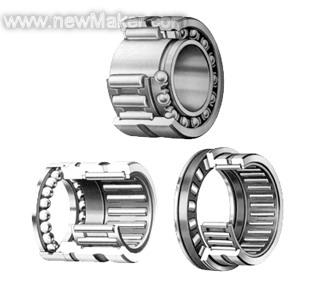The release bearings in the clutch systems of internal combustion forklifts are prone to frequent failure, and a significant portion of forklift malfunctions can be traced back to these components. If operated correctly and maintained regularly, a bearing may last up to three months, but it must be replaced during repairs. However, if the driver lacks experience, the release bearing may fail almost every month. Once damaged, other parts such as the release lever and clutch disc often need to be replaced as well, leading to increased maintenance costs.

What causes the release bearing to wear out quickly? In practice, drivers are required to lubricate the bearing each time, which is not only inconvenient but also ineffective. According to analysis, the high temperature from the engine transfers to the release bearing, and the high-speed rotation of the bearing itself generates additional heat. Under these conditions, the lubricant struggles to stay in place, and the bearing operates under poor lubrication, resulting in frequent damage.
To address this issue, we tried heating the grease to help it penetrate the bearing. Although the grease could fill the bearing, it was destroyed by the high temperature, reducing its effectiveness. This method did not yield satisfactory results, and the bearing life was not significantly extended. We then used a pointed grease gun to directly lubricate the release bearing. After installation, the bearing's service life improved significantly. While this method worked well, it was more complicated to perform.
Later, we explored an oiling method that didn't require disassembling the engine. We first tested it on the 475C engine, and then applied it to the 475C, 480, and 492 engines, all with good results. After repeated trials, improvements, and experience accumulation, we developed a relatively simple oil injection procedure. The specific steps are as follows:
(1) Non-disassembly oiling method: First, open the clutch cover and check the wear of the release bearing. If it’s not damaged or within the acceptable limit, remove the clutch pedal, adjust the connecting rod pin, and move the release bearing and its return seat to the farthest position. Then use a grease gun to fill the bearing housing until the bearing overflows. Slightly rotate the bearing and refill until a small amount of grease appears around it. Rotate the bearing and observe the oil level. If there is resistance when rotating, it means the bearing is fully filled. Remove a small amount of grease from the release housing and reassemble the pin and clutch cover.
(2) Disassembly oiling method: Disassemble the engine to expose the release bearing assembly and the bearing housing. Use the grease hole to refuel the small oil hole below the inner ring of the bearing housing. When grease starts to overflow, rotate the bearing until the inner ring is fully filled. After applying both methods, the bearings can go without oiling for at least six months.
After testing the oiling method at Hengshui Railway Station, the mechanical integrity rate improved significantly, and substantial economic benefits were achieved. It reduced material costs and increased the loading and unloading capacity by 30 tons per month. This method has been promoted at other railway stations and has yielded excellent results.
Electric Proportional Relief Valve (Normally Open)
Guangdong Heidler Technology Co., Ltd , https://www.hyhemit.com